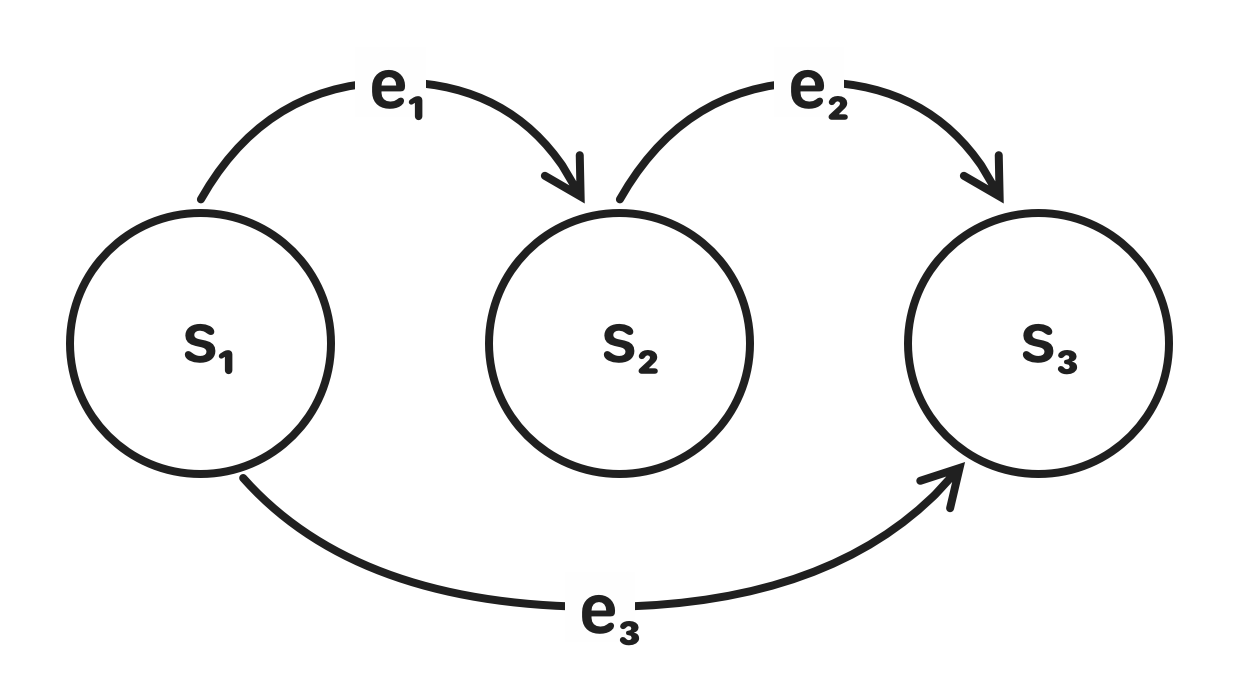Come on, shake your body, baby, do the conga
I know you can't control yourself any longer
—Enrique Garcia
MiamiStateMachine is a small finite state machine implementation written in Swift. It uses a Swift actor to protect the current state and the definition of the state machine from unsafe modification.
I needed a state machine I could trust to consider things like concurrent use.
The only available alternative in the macOS, iOS or iPadOS platform frameworks,
is GKStateMachine in GameplayKit. This is an Objective-C based state machine,
seemingly not updated since its introduction. It is unclear to me if GKStateMachine
does anything to try to be thread-safe or if this is up to the developer using
the framework.
A StateMachine has a state: State (the current state). The State is a type
conforming to Hashable and Sendable. An enum defining the possible states works well.
The transitions between states are defined by Transition, a value with the from: State, the
event: Event needed to do the transition and the to: State where the state machine ends up.
The Event is also a type conforming to Hashable & Sendable, usually an enum.
To make the state machine process an event, the process(:) is used. If a transition is
defined for the event from the current state, the state machine's current state will change.
Start by defining the possible states and events. Enumerations works well for this:
enum MyState {
case s1, s2, s3
}
enum MyEvent {
case e1, e2, e3
}
The state machine is defined by the transitions it can do:
typealias MyTransition = Transition<MyEvent, MyState>
let transitions: Set<MyTransition> = [
Transition(from: .s1, event: .e1, to: .s2),
Transition(from: .s2, event: .e2, to: .s3),
Transition(from: .s1, event: .e3, to: .s3),
]
The state machine can now be created with the transitions:
let stateMachine = StateMachine(transitions: transitions, initialState: .s1)
The state machine is now an StateMachine<MyEvent, MyState>?—optional due to
the failable initializer. Creation of the state machine will fail if the transitions
define an inconsistent state machine. A consistent state machine is one where an event
at a state always leads to the same transition.
Now the state machine can process events. Processing events needs to be done in an asynchronous context:
Task {
// Initial state is s1
await stateMachine?.process(.e1)
// State is s2
await stateMachine?.process(.e2)
// State is s3
await stateMachine?.process(.e3)
// State is still s3. Event e3 had no effect.
await stateMachine?.atEndingState
// True as s3 state has no transitions defined for any event.
}
By listening to the doneTransitionStream: AsyncStream<Transition<Event, State>> stream, it is possible to react to state changes.
There is also rejectedEventStream: AsyncStream<(from: State, for: Event)> to be able to know when processed events did not lead to a state change.
The AsyncStream based solution is a sort of workaround while waiting for Swift to improve observation of values in an actor.
Look, naming is hard, ok? If nothing else, we all know the rhythm is gonna get you.
Just be happy I didn't name it RageAgainstTheStateMachine.
Suggestions, issues and or PRs are more than welcome, but remember: kindness before code.
Copyright © 2022 Erik Tjernlund [email protected]

